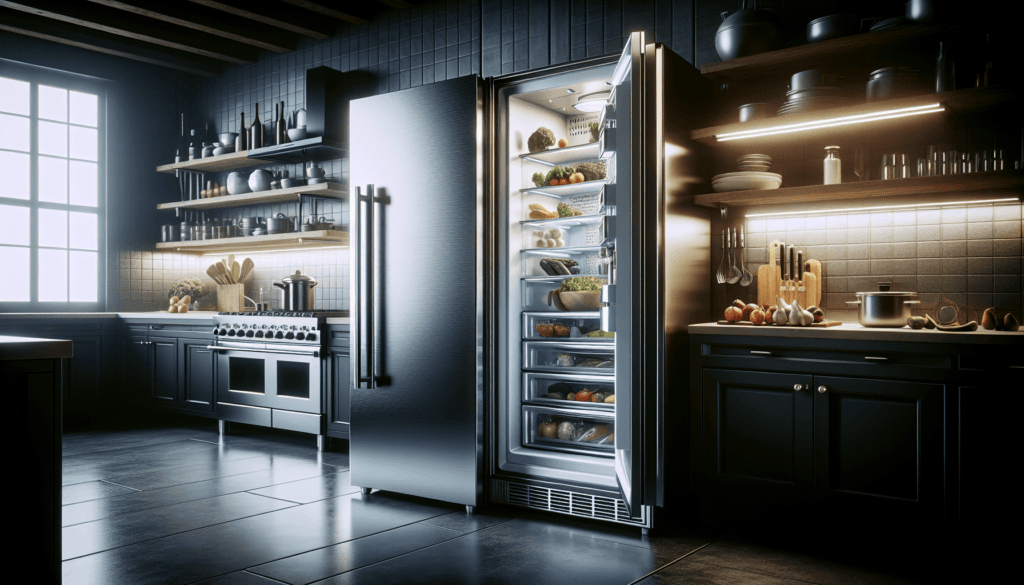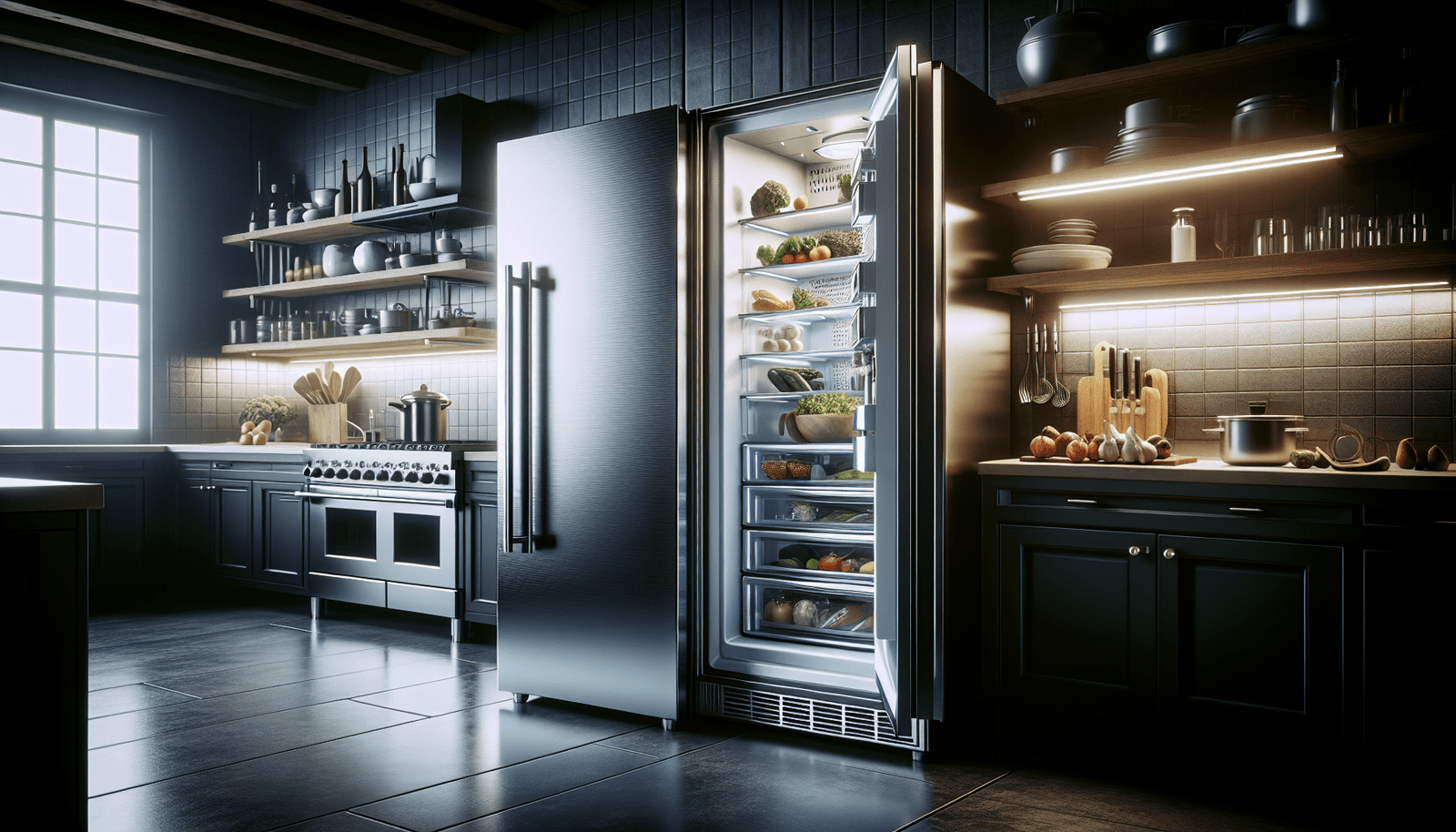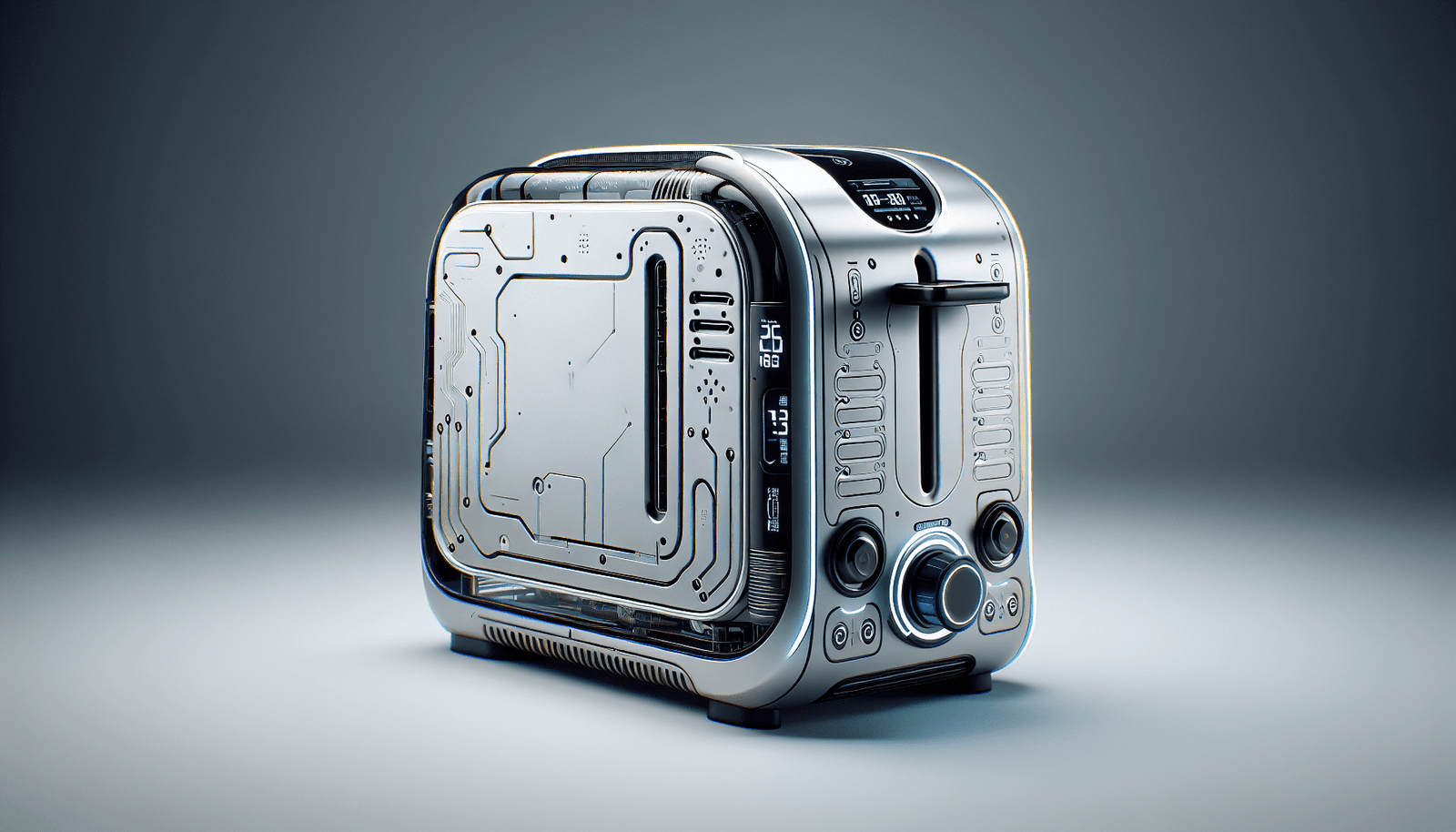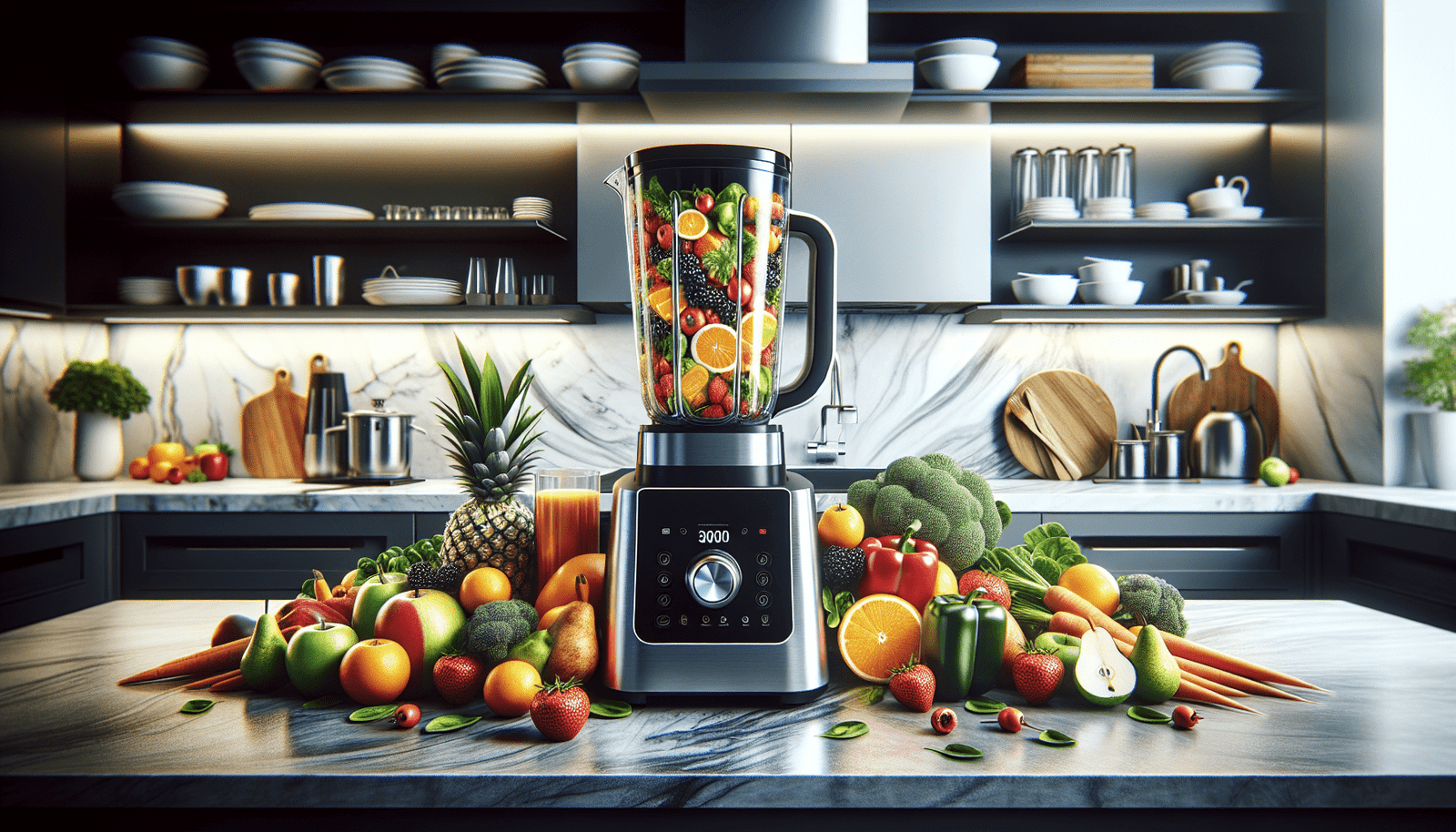Embark on a journey with “The Ultimate Guide to Refrigerators for Professional Chefs,” an essential read for every culinary enthusiast aiming to transform their kitchen into a powerhouse of creativity and efficiency. In this meticulously crafted guide, you’ll explore the vast world of refrigeration technology tailored specifically for the busy, demanding environments of professional chefs. Uncover expert reviews on the latest models, learn about innovative features designed to keep your ingredients at their peak freshness, and take advantage of exclusive deals to equip your kitchen with the best in cooling technology. Whether your goal is to enhance your restaurant’s operations or to elevate your personal cooking space, this guide promises to be an invaluable resource in your quest for the perfect refrigerator.

Understanding Refrigeration Needs
Assessing Kitchen Space and Layout
Before diving into the vast sea of refrigerator options, it’s crucial for you to take a good look at your kitchen’s space and layout. This isn’t merely about finding a spot where your new appliance will fit; it’s about ensuring that the workflow of your kitchen isn’t interrupted. Will the refrigerator door block an aisle when opened? Is there enough room for both cold storage and preparation areas? These are the kinds of questions you need to ponder to maintain an efficient kitchen environment.
Determining Storage Capacity Requirements
Storage capacity is next on your checklist. Here, you need to balance current needs with future growth. It’s easy to underestimate how much space you’ll require, so consider your menu, the size of your operations, and how often you receive deliveries. This foresight can prevent a situation where you’re playing Tetris with your ingredients, struggling to make everything fit.
Importance of Temperature Control
Maintaining the right temperature is non-negotiable for food safety and quality. Different ingredients require different storage conditions, and the ability to control temperature zones in your refrigerator will give you flexibility and peace of mind. Remember, consistent temperature control also affects the longevity of your foods, thereby impacting your bottom line.
Energy Efficiency Considerations
Energy efficiency isn’t just good for the planet—it’s good for your wallet too. Selecting a refrigerator that conserves energy can significantly reduce your utility bills. Look for models with an Energy Star rating and consider the initial investment versus long-term savings. In the end, paying a bit more upfront for a more efficient model can lead to considerable savings over time.
Types of Refrigerators for Professional Kitchens
Reach-In Refrigerators
Reach-in refrigerators are the workhorses of many professional kitchens. They’re designed for convenience, enabling you to quickly grab what you need. Available in various sizes and configurations, these units are a good fit for kitchens of almost any size.
Walk-In Refrigerators
Walk-in refrigerators offer substantial storage space, allowing for bulk storage of ingredients. They’re ideal for large operations and can be custom-built to fit specific dimensions and needs. However, they require careful planning in terms of space and budget.
Undercounter Refrigerators
Undercounter refrigerators are perfect for kitchens where space is at a premium. They fit seamlessly under counters, adding valuable refrigeration space without taking up additional square footage. They’re particularly useful for storing items that need to be readily accessible.
Display Refrigerators
Display refrigerators combine functionality with aesthetics, allowing you to showcase cakes, drinks, or other items in an attractive manner. These are especially useful in settings where visual appeal can drive sales, like cafes or bakeries.
Refrigerated Prep Tables
Refrigerated prep tables are designed to optimize kitchen workflows. They provide a work surface for preparing dishes, along with refrigerated storage beneath for ingredients. This dual functionality makes them a smart choice for any fast-paced kitchen.
Key Features to Look For
Adjustable Shelving and Drawers
Flexibility is key in a professional kitchen, and adjustable shelving and drawers allow you to customize your storage space to fit your changing needs. Look for units that offer easy-to-adjust options.
Digital Temperature Control
Digital temperature controls provide precise temperature management, allowing you to easily adjust settings and maintain optimal conditions for various food items. This feature is essential for ensuring food safety and quality.
Auto-Defrost Function
An auto-defrost function can save you time and labor costs by automatically preventing ice buildup, ensuring your unit continues to operate efficiently without the need for manual defrosting.
Door Locks and Alarms
Security features like door locks protect your inventory from unauthorized access, while alarms can alert you to potential issues, such as a door left ajar or a malfunctioning cooling system.
Compressor Type and Placement
The compressor is the heart of your refrigerator, and its type and placement can affect the longevity and efficiency of your unit. Top-mounted compressors tend to be more efficient and easier to clean, while bottom-mounted compressors may be more convenient for shorter staff and in hotter kitchen environments.
The Role of Ventilation and Placement
Understanding Airflow Requirements
Proper ventilation is critical for refrigerator efficiency. Ensuring your unit has enough space around it for air to circulate can prevent overheating and ensure consistent performance.
Optimal Placement for Efficiency
Where you place your refrigerator can affect its efficiency. Avoid areas near heat sources or direct sunlight, which can force the unit to work harder to maintain temperature.
Avoiding Heat Sources
Heat sources such as stoves, ovens, and direct sunlight can dramatically impact your refrigerator’s efficiency. Positioning your unit away from these elements can enhance performance and extend its lifespan.
Allowing Space for Ventilation
Remember to allow space around your refrigerator for ventilation. This not only helps with efficiency but also contributes to a safer working environment by reducing the risk of overheating and fire hazards.

Brand and Manufacturer Comparison
Evaluating Brand Reputation
A brand’s reputation can give you insights into the reliability and quality of their products. Research and compare different brands, considering their history in the market and their standing with professionals in the culinary industry.
Warranty and Service Support
Check the warranty and service support offered by manufacturers. A comprehensive warranty and accessible service support can save you significant time and money in the event of an issue with your unit.
Manufacturer Reliability
Manufacturer reliability goes hand in hand with brand reputation. Look into how manufacturers handle recalls, service requests, and customer feedback. Companies that stand behind their products and offer excellent customer service are usually worth the investment.
Customer Reviews and Ratings
Customer reviews and ratings can provide real-world insight into how a refrigerator performs in a professional setting. Look for feedback on long-term reliability, service experiences, and actual energy efficiency vs. claims.
Cutting-Edge Refrigeration Technology
Smart Refrigerators and IoT Integration
The latest refrigeration technology includes smart refrigerators that can integrate with the Internet of Things (IoT), providing remote monitoring, automatic inventory tracking, and even energy management features that can streamline your kitchen operations.
Innovations in Energy Efficiency
Advancements in insulation materials, cooling systems, and design are driving the development of more energy-efficient refrigerators, reducing operating costs and environmental impact.
Advancements in Cooling Systems
Modern cooling systems offer more precise temperature control and faster cooling times, enhancing food safety and quality while also reducing energy consumption.
Hygiene and Sanitation Features
New refrigerators often come with enhanced hygiene and sanitation features, such as antimicrobial coatings and air filtration systems, to ensure your kitchen meets the highest standards of food safety.
Maintenance and Care
Regular Cleaning Schedule
Setting up a regular cleaning schedule for your refrigerator is essential for maintaining its efficiency and extending its lifespan. This includes wiping down surfaces, cleaning coils, and checking seals.
Preventative Maintenance Tips
Preventative maintenance, such as regularly checking and cleaning the compressor and making sure seals are airtight, can prevent larger issues down the line. Making these checks part of your kitchen’s routine can save on costly repairs.
Handling Repairs and Service Calls
When repairs are needed, it’s important to act quickly to avoid further damage or spoilage. Keep service numbers handy and choose reputable service providers who are experienced with commercial kitchen appliances.
When to Replace Your Refrigerator
Sometimes, the cost of repairs and reduced efficiency make replacement a more economical choice. If your unit is old, failing frequently, or no longer meets your kitchen’s needs, it might be time to consider an upgrade.
Sustainability Practices
Energy Star Ratings
Choosing refrigerators with Energy Star ratings ensures that you’re selecting units that meet specific energy efficiency criteria, reducing operational costs and environmental impact.
Eco-Friendly Refrigerants
Eco-friendly refrigerants are becoming more common and are less harmful to the environment. Opting for models that use these refrigerants can contribute to your kitchen’s sustainability goals.
Reducing Waste and Conserving Energy
Simple practices such as keeping doors closed as much as possible, regularly servicing your unit, and using energy-efficient lighting can all contribute to reducing waste and conserving energy.
Sustainability Certifications
Look for sustainability certifications beyond Energy Star. These can include the LEED certification for green buildings or specific industry awards that recognize environmental stewardship.
Budget Considerations
Initial Purchase vs. Long-Term Savings
The initial purchase price of a refrigerator is only part of the cost equation. Consider energy efficiency, maintenance costs, and potential savings from reduced food waste when budgeting for your new appliance.
Financing Options for Professional Kitchens
Many suppliers offer financing options to help manage the upfront cost of commercial refrigeration units. Explore these options to balance immediate needs with long-term financial planning.
Cost of Ownership and Operation
The total cost of ownership includes purchase price, installation, maintenance, and operating costs. A more expensive unit may ultimately be cheaper to operate due to lower energy bills and maintenance needs.
Taking Advantage of Rebates and Incentives
Look into rebates and incentives offered by utilities or government agencies for purchasing energy-efficient appliances. These can provide significant savings and lower the overall cost of your investment.
Navigating the Market and Making a Purchase
Where to Buy Professional Kitchen Refrigerators
From specialty appliance stores to online retailers, numerous options are available for purchasing professional kitchen refrigerators. Consider the benefits and drawbacks of each to find the best fit for your needs.
Utilizing Expert Reviews and Industry Insights
Expert reviews and industry insights can guide your decision-making process by providing detailed analyses of different models and brands. Make use of these resources to choose the right refrigerator for your kitchen.
Comparing Online vs. In-Store Shopping
Online shopping offers convenience and often wider selection, but in-store shopping allows you to see and inspect models firsthand. Weigh these options based on your priorities and the level of service provided by the seller.
Installation and Setup Considerations
Don’t overlook installation and setup. Ensure that you have the necessary infrastructure in place and that the unit’s dimensions will fit through your doorways. Consider hiring professionals to ensure proper installation and avoid any potential issues.



